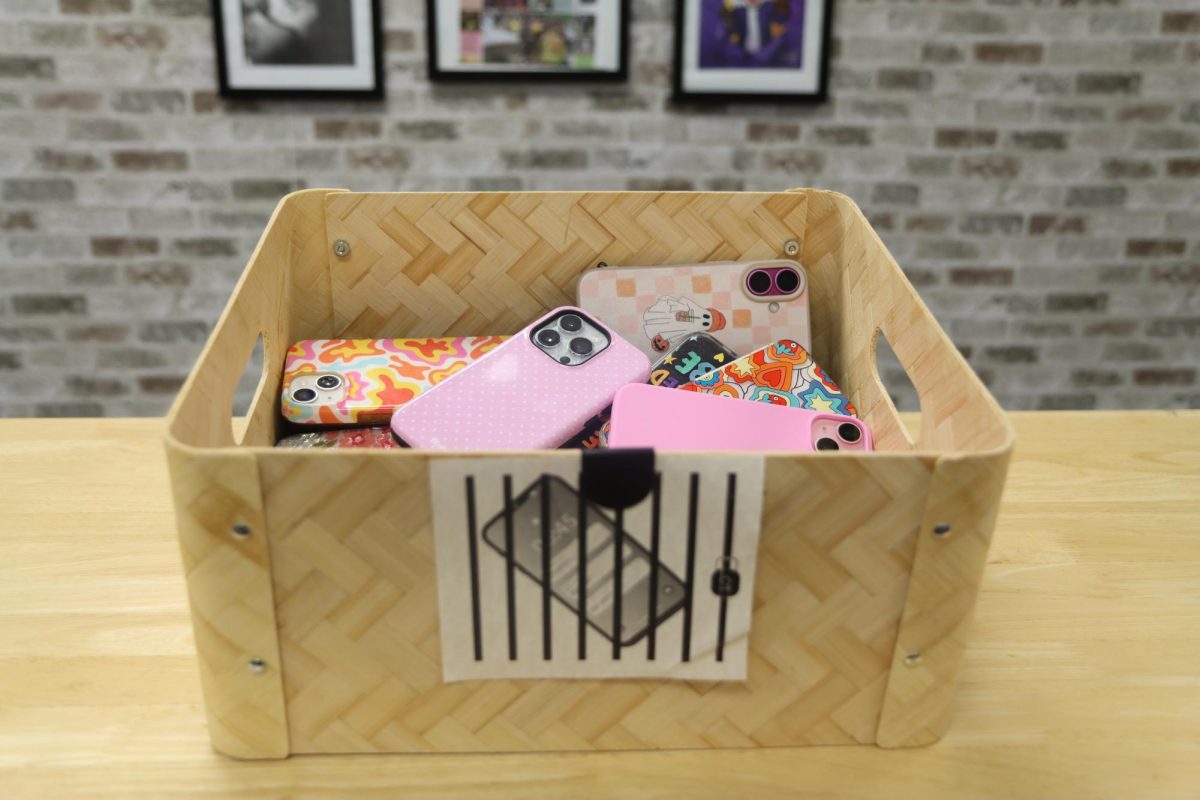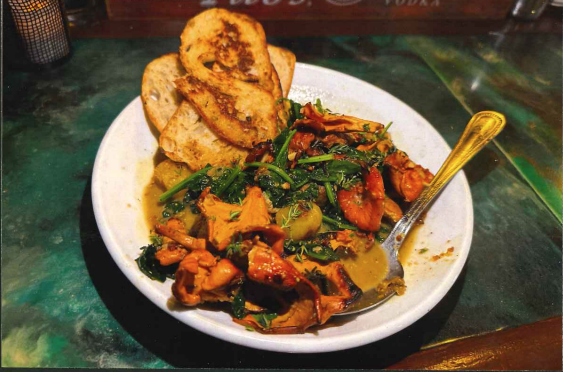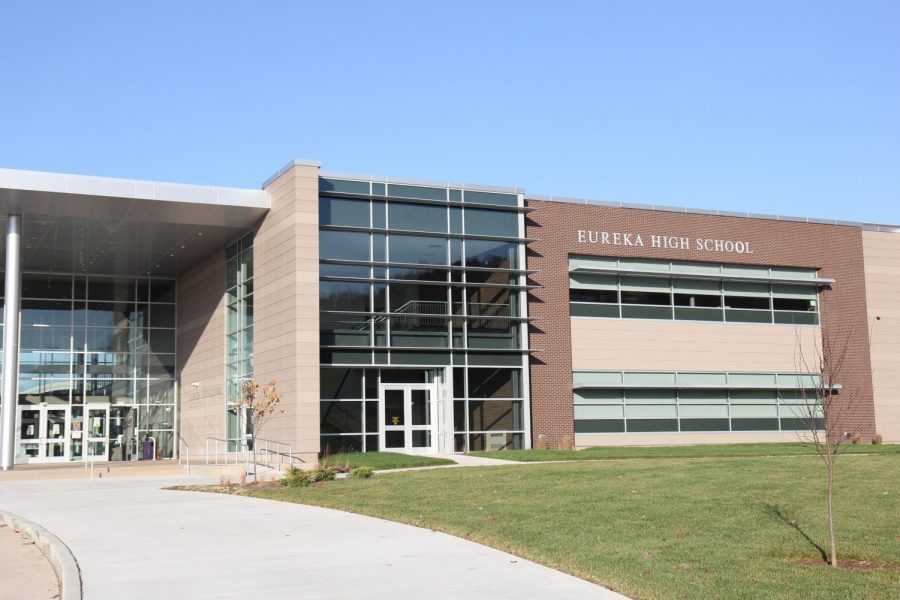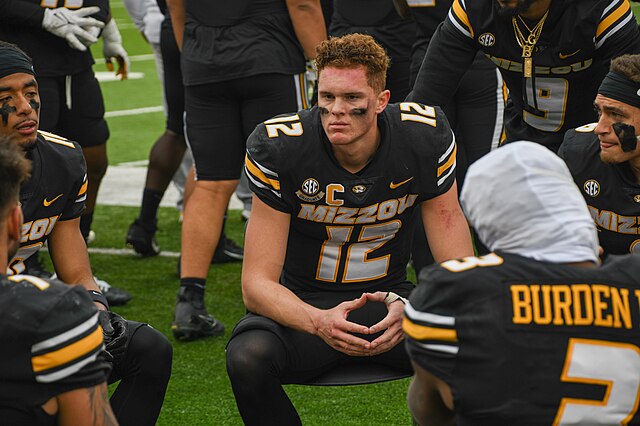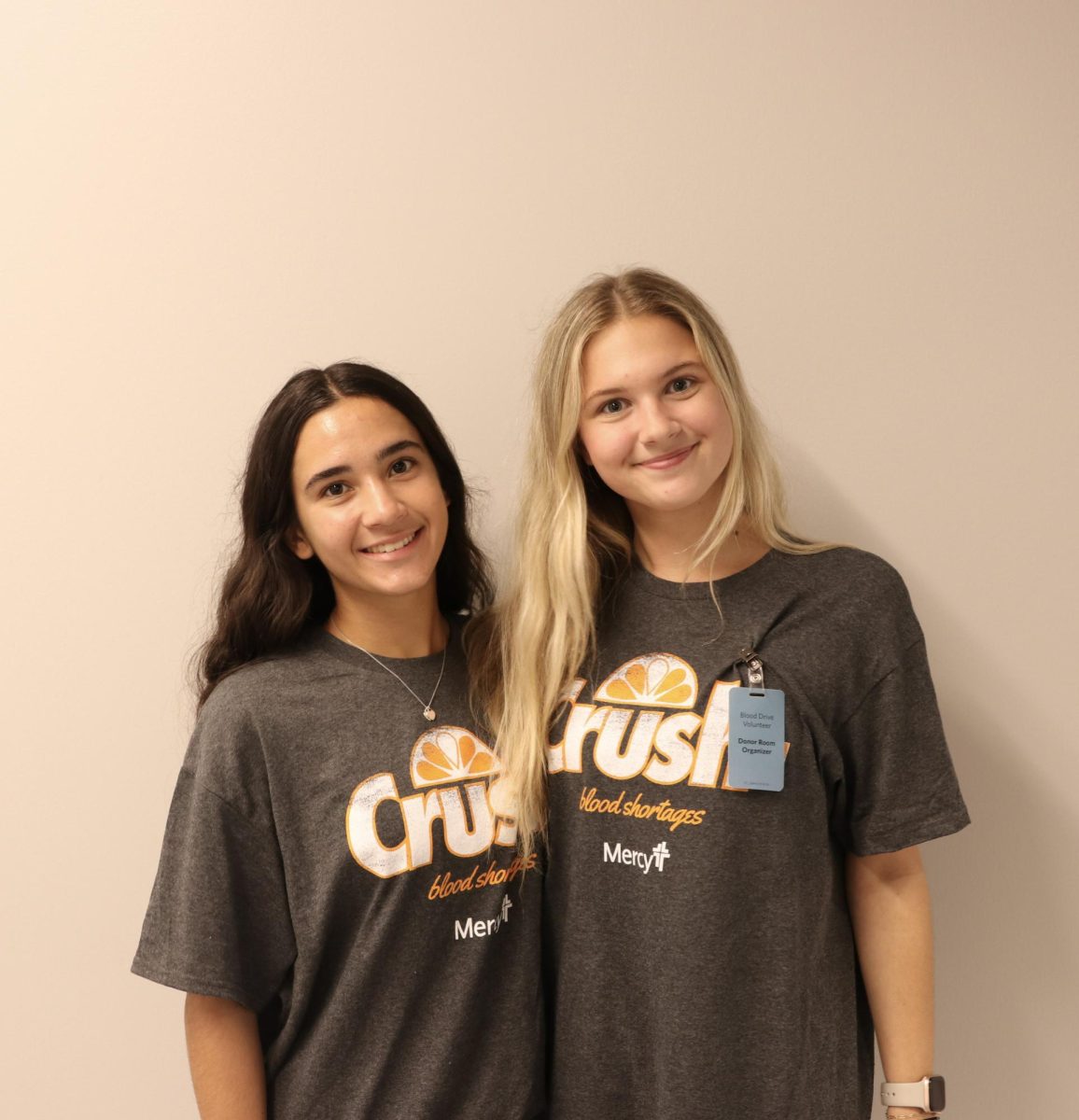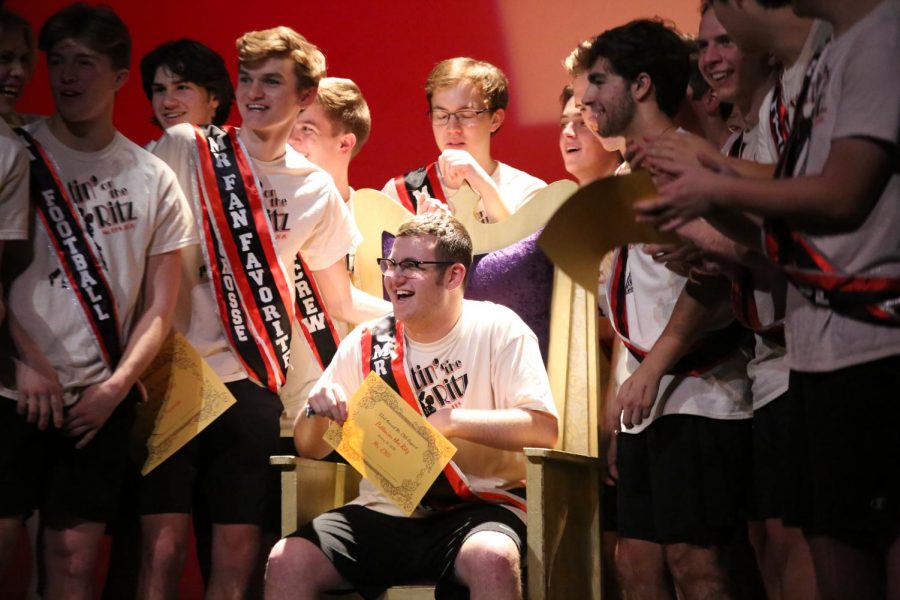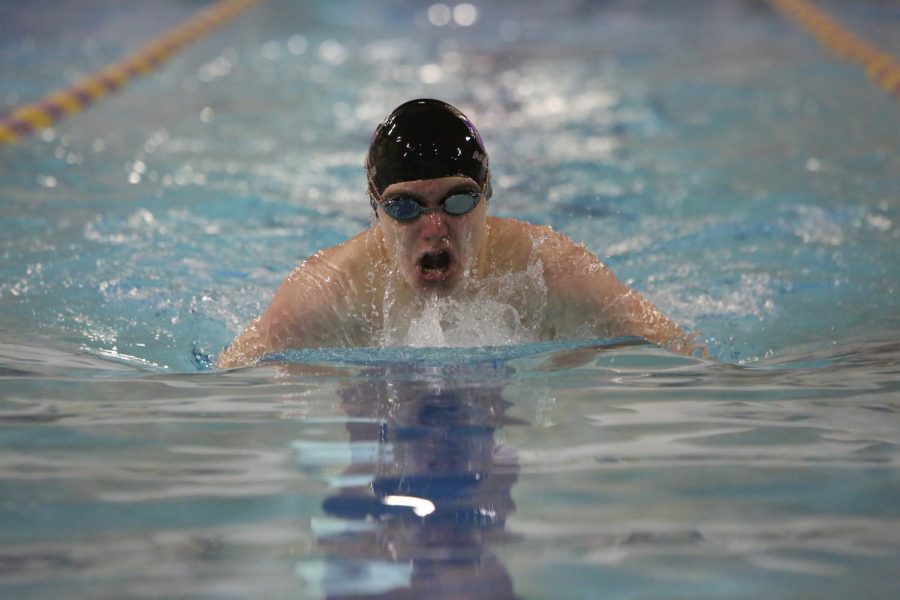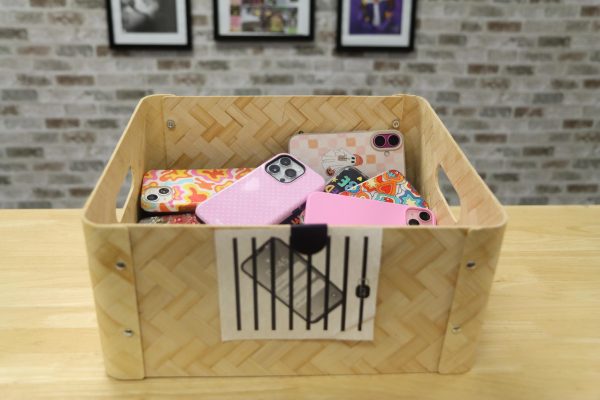Shifting meal plans
Students adjust to a new lunch schedule
Take attendance. Get out Chromebooks and notebooks. Listen to the teacher. Review homework or classwork. The tasks of the start of class can easily consume 10-15 minutes. By the time instruction and learning really starts, a few minutes later, the bell rings for lunch.
After lunch, students return to class to repeat the process all over again. Far from efficient, the second lunch shift has long been a thorn in the side teachers and students.
EHS principals decided to reduce the number of lunch shifts from three to two to address the splitting of classes.
Each lunch shift is now 26 minutes, with first lunch running from 11:07 a.m. to 11:33 a.m., and second lunch begins at 12:07 p.m. and ends at 12:33 p.m. With only two shifts, there are around 800 students in the cafeteria at once.
While 800 people in a confined space may feel tight, administrators hope the impact on learning will outweigh the stress on lunchtime.
Annemarie Gilman, assistant principal, said that the interruption that the former B lunch brought broke up lectures and distracted students from what they were learning.
“I was very cognizant of all of those variables and trying to juggle all of those pieces so that it did not impact the quality of lunch,” Gilman said.
During the years that three lunches were standard, fourth hour began at 11:01 a.m. and ended at 12:20 p.m. However, B lunch occurred at 11:26 a.m. and lasted until 11:56 a.m., causing students to leave class to eat after only 25 minutes.
“It’s just a much more cohesive lesson when you don’t have that interruption, especially when you have to quiet people down and help them refocus,” Julie Weitzel, Spanish, said. “Those transitions are important to help the learning reach the point where we want to be at the end of the hour.”
Eliminating the middle lunch shift also eliminated concerns about testing integrity.
“When it affected us was when we took a quiz or a test because you didn’t want to break up a quiz and a test in the middle,” Carlo Atienza, Math, said. “You want clean flow of thought.”
A concern Atienza expressed was that students who went to lunch in the middle of a test could use the time to study or research answers to questions.
Split classes even forced some teachers to arrange a switch in lunch shifts on days when students were testing, which required them to speak to a principal first.
“I would give one portion of a test, and then give them part B during the second half,” Weitzel said. “That was an issue.”
With the start of the new academic year, Gilman was inspired to try something new and remove the middle lunch shift. Now all fourth hour classes are interruption-free.
“It’s helped a little bit in reducing the distractions for kids and improved the quality of instruction,” Gilman said. “Teachers can stay with their lesson, and they don’t have that interruption nearly to the same degree.”
The transition was not smooth at first for students who had to adjust to how many people were in the Commons at once.
Eureka’s total enrollment for the 2018-2019 school year is 1,780, a decrease of 119 people from last year. However, there is now a surplus of students at lunch compared to past years.
“It’s a little different because of having staff for over 800 students per lunch shift. With only having the two, it changes a little bit on how they cook and how they prepare for the meals,” Sheila Jaycox, secondary manager of the kitchen, said.
Students found that a filled lunchroom created issues with the amount of space they had to eat and walk around.
“A big problem is how many people are there,” Michael Colletti (10) said. “It gets really crowded, and with that it gets difficult to get places at lunch.”
Gilman said having an increase of about 300 additional students eating lunch at once is something the school can fully manage.
In July, she contacted Eureka’s Fire Department to ensure that a greater number of students in the Commons would not present any safety concerns.
After gathering that the Commons was around 14,000 square feet, the fire chief established the maximum number of students that could be in the commons at once without causing a fire threat. Common fire safety code states that the number of occupants allowed in a room is based on how large the room is and what the area will be used for.
A room with seating and chairs requires 15 square feet of space per person. By dividing the square footage of the commons by 15, the fire chief concluded that 939 students are allowed to eat lunch in the cafeteria during each lunch shift.
“We have plenty of room, even when the weather gets bad and all those students who were outside will be coming in,” Charles Crouther, head principal, said.
After a shaky first few days of school, students and parents voiced their concern for how long it took kids to get through the lunch line.
“They are so crowded,” Hawa Muhando (11) said. “The lines fill up so fast, especially if you come from the science hallway.”
The former three-lunch-shift model had the benefit of smaller numbers of mouths to feed.
“It was more efficient with three lunches because people could get through the lunch line quicker and have more time to eat,” Natalie Esgar (11) said.
Fortunately after some adjusting, the amount of time it takes for students to get their food is now similar to years previous. Principals and cafeteria staff did their best to ensure that all students were able to eat.
“I was literally sitting there with a stopwatch on my phone making sure I could see how long it was taking kids to get through,” Gilman said. “After the second day, everything seemed to be back to normal, like a 12-13 minute pattern.”
A factor that assisted in shortening the lines was the idea for a pasta line. The hot food lines had always been the most popular, so Jaycox suggested adding in a line for pasta to solve the issue.
“We were trying to incorporate something else that would alleviate the three long lines over here and that would interest students,” Jaycox said. “My favorite question and what I always wanted to ask was, ‘What did you eat over the summer that you wish I had?’”
Cafeteria personnel created the pasta line next to the deli line to relieve traffic. It features three different types of sauces and a special option each day, including a variety of meals from mac and cheese to chicken alfredo.
Having two lunch shifts also gives cafeteria staff an extra half hour to make fresh food.
Using batch cooking, they are able to cook in small groups in order to offer students hot meals in both lunch shifts. This approach to cooking gives custodians and kitchen staff experience for the schedule change beginning next year.
“If we were going to make any kind of change, this year would be a good time to try to do that so we could figure out what problems it might present,” Gilman said.
The flex time incorporated into next year’s schedule will be packaged with lunch. Lunch may be open for the entire time or be based on this two-lunch model. Decisions on how long these shifts will be have not been finalized, but batch cooking will still be used by the cafeteria department.
The staff focused on ensuring students had enough time to eat while still having options of quality meals.
“Custodial and the cafeteria staff did everything in their power to help the administration make this smooth and beneficial for our students,” Crouther said.
With a new schedule planted firmly in the future, tackling the issue of lunch is one less variable to address next year.
Your donation will support the student journalists of Eureka High School - MO. Your contribution will allow us to purchase equipment and cover our annual website hosting costs.
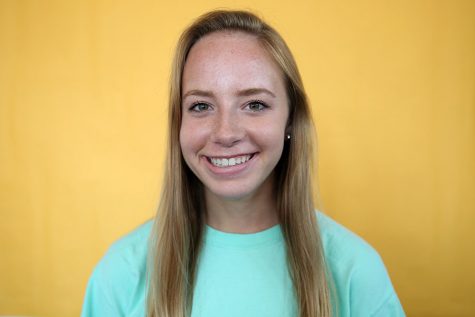
This is Brown's first semester on staff where she serves as a reporter for the EHS-hub. Brown enjoys playing soccer, hanging out with friends, and...

This is Jack's seventh semester on the Digital Media Production staff. In his free time, he likes to film and edit videos. If he could use one word to...


